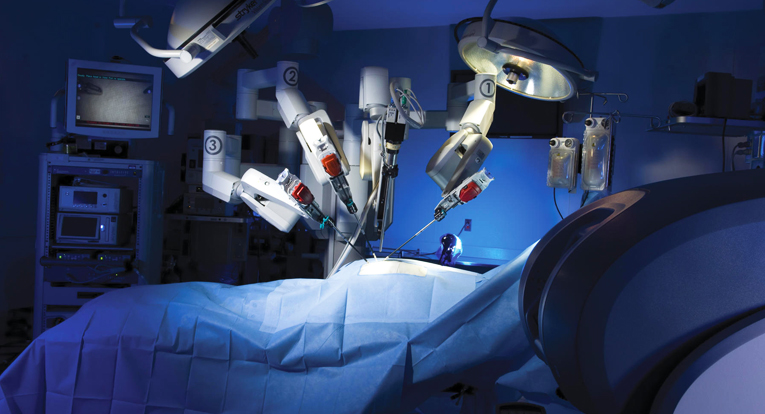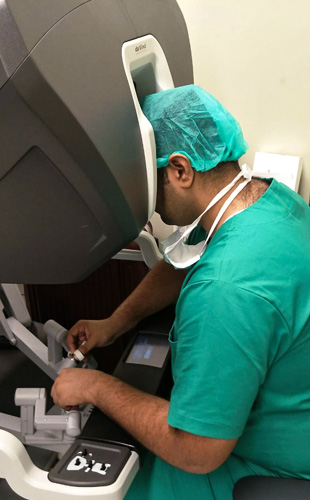Robotic Surgery is a leading-edge technology that is used in several specialties to carry out the surgical procedures with proven superior patient outcomes.

Best Robotic Surgeon in Delhi, India
What is Robotic Surgery?
The da Vinci Surgical System (commonly known as surgical robot) is designed to provide surgeons with enhanced capabilities, including high-definition 3D vision and a magnified view. This enables the doctor to see tissues and blood vessels at a level of detail far beyond what is possible with open surgery or laparoscopic surgery. Surgeon controls the system, which translates his or her hand movements into smaller, more precise movements of tiny instruments inside body. Though it is often called a robot, the system cannot act on its own. Instead, the surgery is performed entirely by your doctor.
The system’s tiny instruments have an even greater range of motion than the human hand. With Robotic Surgery, physicians can offer state-of-the-art treatment with the potential for outcomes that are equal to or better than conventional surgery – and with the potential benefits of a minimally invasive procedure
The Patient Unit
You lie on the operating table and the patient unit is beside you. The unit has 4 arms. One holds the camera and the others hold the surgical instruments. The surgeon makes 5 small cuts in your abdomen. The camera and instruments are put in through the cuts to do the surgery. The patient unit is controlled by the control unit.
The Control Unit
The control unit is where the surgeon sits. It is in the operating theatre with you but is separate from the patient unit.
The surgeon can see the operating area on a screen. This gives the surgeon a 3D view that they can magnify up to 10 to 12 times.Below the screen are the controls. The surgeon uses these master controls to move the instruments on the patient unit. This turns any movements the surgeon makes into much smaller movements of the machine. It also reduces any shaking, allowing the surgeon to make very tiny, accurate movements.
Robotic Surgery Benefits
- Computerised 3D visualisation for the surgeon.
- Increased precision because of automation.
- Decreased blood loss and lesser transfusions.
- Reduced pain.
- Reduced risk of infection.
- Reduced risk of complications.
- Increased range of motion.
- Enhanced access.
- Lesser recovery time.

To schedule a consultation with Dr. Daksh Sethi, the finest Best Robotic Surgeon in Delhi, India with latest know-how in diagnostic and corrective Robotic, please call +91 9873144244 or write to us at care@drdakshsethi.com

